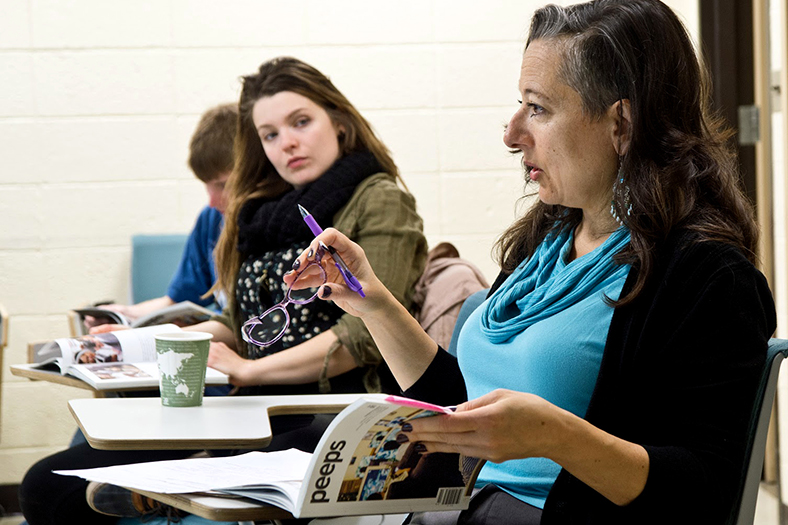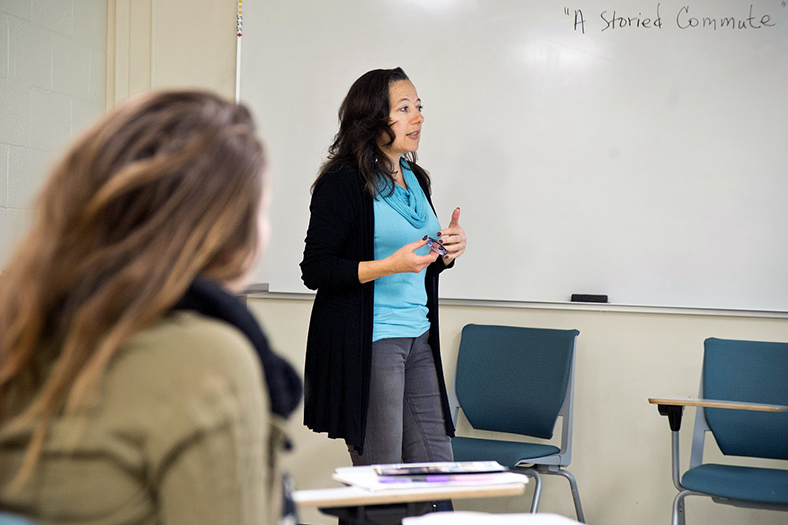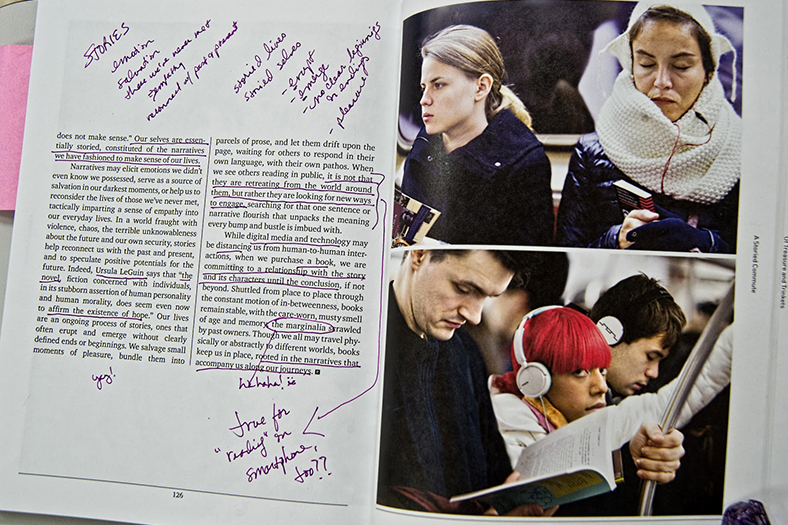
Professor Emad wrote us last December asking if we would be able to ship copies of Peeps Magazine to Minnesota for a senior seminar she was teaching in January. Eager to see how students are engaging with the magazine and to see how it can be used as a course resource, we asked Dr. Emad to share her experiences, and those of her students.
The course I’m teaching is the Anthropology Senior Seminar. It’s the undergraduate capstone course for our Anthropology majors and is constructed as a team-based, project-intensive course around a specific theme reflecting the professor’s research interests. It’s my first time teaching the class and since my recent ethnographic work has been on what I’ve come to call naturalized technology practices, I decided to focus this year’s seminar on technology and culture.
I’m not sure how I decided on Peeps as a resource for the class. It all started as a fabulous Christmas present for my husband, also an anthropologist. I couldn’t bring myself to wrap the beautiful issue of Peeps and kept secretly paging through it and reading it when he wasn’t around. I think it suddenly occurred to me how vivid and engaging it was and that students would love it. The theme of technology as a kind of “modern protagonist” also fit perfectly with the course focus on technology and culture. I approach all my courses with an interest in engaging students visually and developing their visual literacy chops. In all these ways, it made immediate sense to contact you and find out if you’d be willing to have the magazine produced as a text for a course.
I’m an immigrant kid who has kind of always done ethnography, just as a way to understand the people around me and to learn how to belong in my immediate environments. Explaining Thanksgiving to my parents took years and honed my cultural translation skills! I did graduate work at both Chicago and Rice, two polar opposites in their approaches to anthropology. Chicago in the 1980s still had it’s foundational “systems” approach and Rice in the early 1990s energized the whole discipline by raising questions and encouraging experimentation around anthropology’s most cherished practices—fieldwork, participant-observation, ethnography, writing.


“Using Peeps in class as a resource is very inspiring given the diversity of the authors and the content of the magazine itself. Aesthetically, I am very drawn to the design and layout of their magazine and their ability to take well researched subjects and present them in a way that is accessible and visually stimulating.” —Student
My work has always been about the human body and how it functions in various ways as a vector for culture. I’ve done fieldwork in anatomy labs, acupuncture clinics, childbirth support organizations, and inside the pages of comic books. Lately my own classrooms have become the site for my research questions around what people (my students especially) do with technology without thinking (or naturalized technology practices). I’ve also become very interested in the visual, creating and teaching with digital stories and other forms of short and participatory media. I want my students to graduate with the capacity to work ethnographically in any environment, and to create multi-media products. Peeps has been a great inspirational example as well as providing supportive content for this endeavor.


“Without Peeps I would have never found my passion for Business Anthropology.” — Student
I’ve been a professor at UMD since 2000, and I’ve worked with a lot of students. But I’ve never had students approach me in the first few days of a class and tell me how much they love the text. Particularly when I have not assigned anything yet! Students in this seminar started paging through and reading Peeps on their own pretty much the moment they got their hands on it. The quality of the paper, the compelling images, the layout – for me and for my students, the sensual, tactile experience of the magazine definitely makes you want to “hang out” with it.
I think one of the most compelling pieces we’ve worked with in the class is “The Storied Commute” article that we were focusing on the day we were photographed. The combination of photos and text is profoundly engaging in that piece. We had a lot of fun tracking and interpreting the variety of gazes captured by Reinier Gerritsen’s subway photographs. And Emma Backe’s opening up of reading as a cultural phenomena, stories as “person building,” sparked an energetic discussion for our class – under what circumstances do we get fully engaged in reading? Does reading on a phone or a tablet provide the same experience? We don’t have much of a commuter culture here in Northern Minnesota, so in what circumstances culturally do we find ourselves reading with some of the rapt attention Gerritsen captures?
Ultimately the students in the Anthropology Senior Seminar are working in teams pursuing their own ethnographic projects. One team is looking at the role of emotion in social media posting. Another is investigating the local passion economy, specifically around glassblowing artists in our city. And a third team is exploring how maker culture at the local level engages and sustains a broader maker movement through social/commerce sites like Etsy. Peeps provides them with many anthropologists’ voices, projects, and questions to swim in as they pursue their own fieldwork. ●